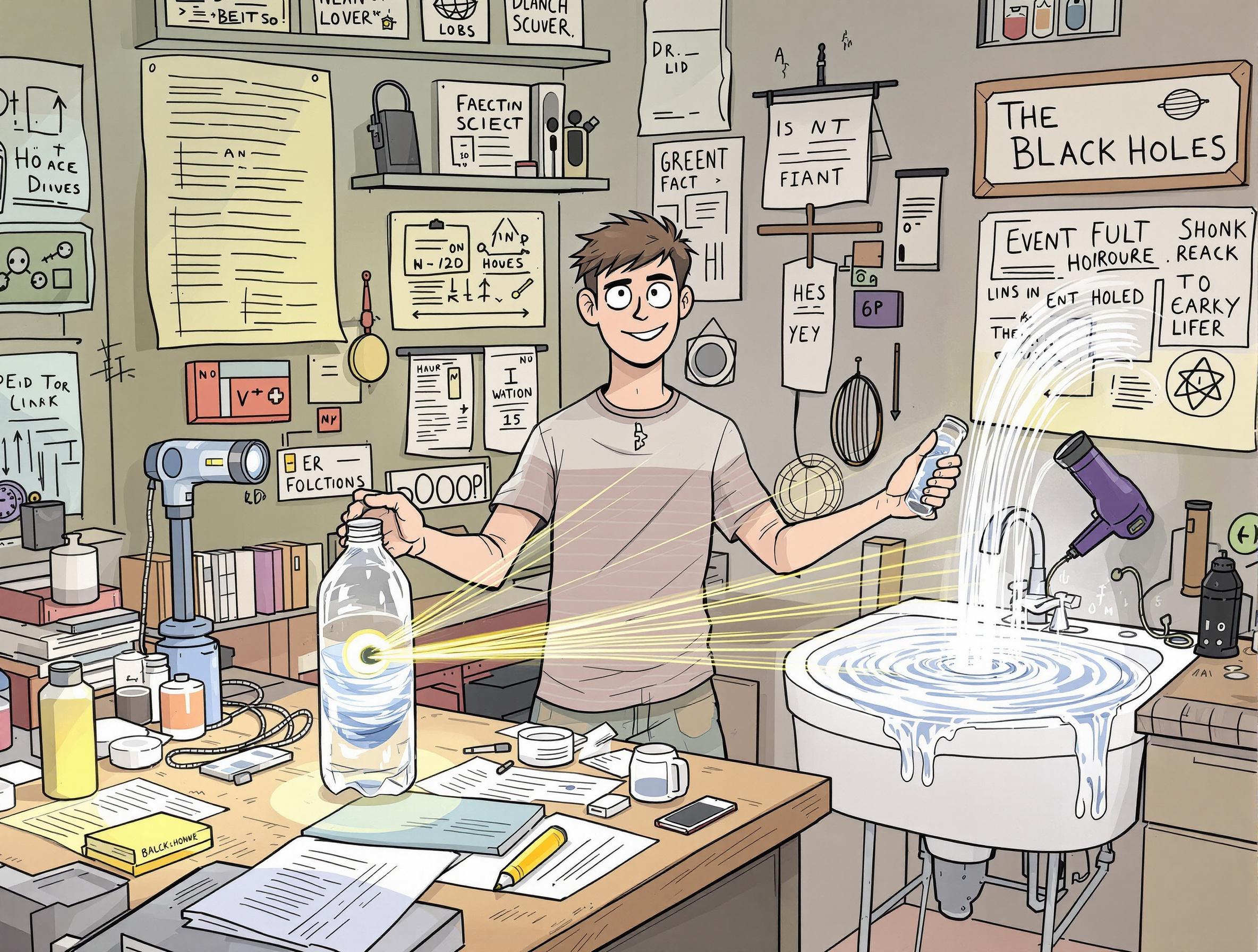Introduction
Black holes are absurd cosmic objects, born first from mathematical theories and only later observed — think of the recent historic achievement: the first-ever photograph of a black hole!
Today, we’ll dive into a truly unusual and intriguing topic: is it possible to recreate such cosmic monsters in a laboratory, or even at home?
Before you start laughing...
Yes, I know — it sounds completely crazy that someone, especially someone like me, would even ask such a question.
But that's exactly it: I love asking questions that push the boundaries of reality.
And so, here we are.
Now, you’re half-right if you think this is pure madness.
How? What did you say?
Exactly — you’re right, but only halfway.
Because, as we’ll soon discover... there’s a fascinating truth hidden behind the madness.
1. Is It Possible to Create a Real Black Hole?
The short answer is no.
To form a real black hole, you would need to compress an enormous mass into an incredibly tiny space, reaching unimaginable densities.
Even the most powerful particle accelerators, like the Large Hadron Collider (LHC), cannot achieve such energy levels.
Some speculative theories once proposed the creation of mini black holes in laboratories. However:
-
They have never been observed.
-
Even if they formed, they would instantly evaporate through Hawking radiation, posing no danger at all.
So, real black holes are out of our reach.
But the story doesn’t end here.
2. How to Simulate a Black Hole: Optical and Acoustic Experiments
If we can't create real black holes, we can still simulate their effects, reproducing two fundamental phenomena:
-
The bending of light (optical black hole).
-
The trapping of waves (acoustic black hole).
Let’s see how.
Optical Experiment: Bend Light Like Gravity
Materials needed:
-
A plastic bottle filled with water or a magnifying glass.
-
A flashlight or a low-power laser pointer.
-
A dimly lit room.
Step-by-step procedure:
-
Place the bottle or the lens between the flashlight and a wall.
-
Turn on the flashlight and point the beam through the bottle or lens.
-
Watch carefully: the light beam will bend and focus toward the center, much like it would near a black hole.
This optical black hole experiment simulates how gravity bends light around a cosmic black hole.
Acoustic Experiment: Create a Sound Horizon
Materials needed:
-
A sink or large basin filled with water.
-
A hairdryer or a powerful fan.
Step-by-step procedure:
-
Create a steady flow of water, either by lightly opening the tap or pouring water steadily.
-
Aim the hairdryer or fan against the water flow.
-
Observe closely: at a certain point, the small water ripples will no longer be able to move upstream.
You have created an acoustic black hole, also known as a sound horizon!
In this acoustic black hole experiment, just like near a real black hole, waves cannot escape once they cross a critical boundary.
3. Watch These Black Hole Experiment in Action
Conclusion:
You don’t need to travel to the edges of the universe to encounter the mysteries of black holes.
With simple tools — a bottle, a flashlight, and a hairdryer — you can recreate on a small scale the very principles that govern the most extreme phenomena in the cosmos.
Science is not only about formulas; it’s about wonder, experimentation, and discovery.








Leave a Comment